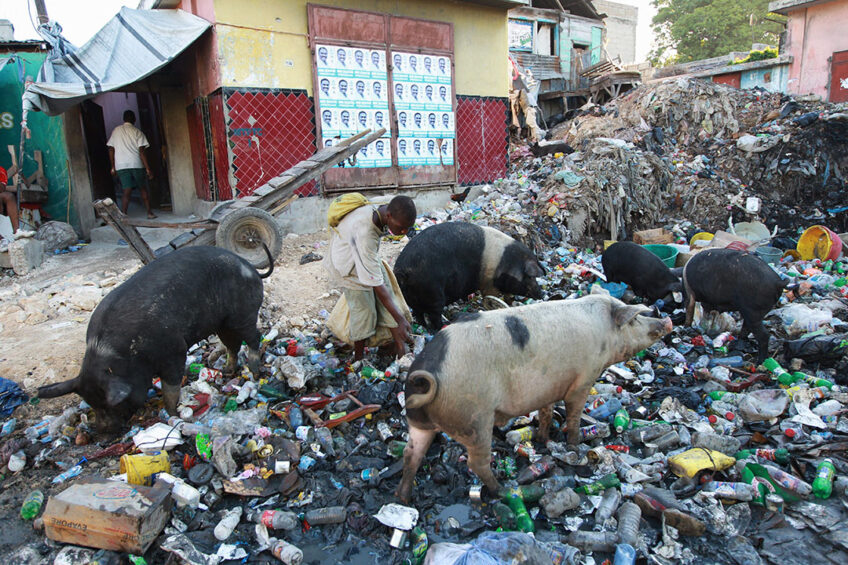ASF Haiti: Outbreaks in capital Port-au-Prince

The African Swine Fever epidemic on the Caribbean island Hispaniola, comprising Haiti and the Dominican Republic, has not reached its end yet.
A recent update to the World Organisation for Animal Health (OIE) shows that the virus has been detected in the far west of Haiti, with outbreaks in the departments Grand’Anse and Sud. In addition, various outbreaks have also been reported in and around the capital Port-au-Prince.
Most of the 15 outbreaks, which took place between October and January , were discovered on backyard farms and often included less than 10 animals. Only 1 location was somewhat larger, with 57 pigs on-site, about 40 km north of Port-au-Prince.
It is very likely that the picture of outbreaks in Haiti is more diffuse. Haiti is 1 of the poorest countries in the world, which means that the country does not have a sophisticated farm structure, let alone a veterinary surveillance structure. For proper virus testing, the country is dependent on foreign assistance. The confirmation of the first case in Haiti, in August 2021, was carried out by the Plum Island Animal Disease Center in the USA.
ASF situation in the Dominican Republic
Plum Island initially also assisted in the detection of ASF cases in the neighbouring Dominican Republic, forming the east side of Hispaniola island. In mid-January 2022, however, the country reported that it is now able to do PCR tests itself within 24 hours, and would no longer be dependent on foreign assistance.
Ever since, however, no ASF updates have been reported to the OIE, whilst the last update of January 5, 2022 did not include new outbreaks. The last detected outbreak in the OIE data took place on December 5, 2021 in San Pedro de Macorís province.
Unexplained pig deaths in Hato Mayor province
It is unlikely, however, that this means that the situation has been calming down entirely overnight in the Dominican Republic. The map above shows that outbreaks have taken place throughout the entire country – the smaller orange dots referring to outbreaks reported in 2021. The virus was reported on many locations.
In early February 2022, Dominican media outlet El Caribe reported about ”massive pig deaths” occurring in eastern Hato Mayor province – one that hasn’t officially been infected when following OIE data. Journalists interviewed local farmers, who lost their herds, suspected ASF, faced bankruptcy, and pointed to passivity from the authorities. The reporters observed how animals appeared dead in forests, pastures and on banks of streams and canyons. The dead animals were being burnt to avoid contamination.
The ministry of agriculture sent a technical commission to Hato Mayor del Rey to verify the case, and reported that the ”information was false” – there wouldn’t be massive pig deaths nor ASF there. The technicians indicated that in any case they will analyse samples in the laboratory to give the producers security.
USA joins international ASF group
In order to jointly combat the ASF outbreaks internationally, the USA have now also joined the group “Prevention PPA Latam,” which, as a consequence changed its name to “Prevention PPA América.” The “PPA” refers to the Spanish name for African Swine Fever, being Peste Porcina Africana.
The group, which was established by the Brazilian Animal Protein Association (ABPA) now houses 22 pork organisations from 18 countries.











